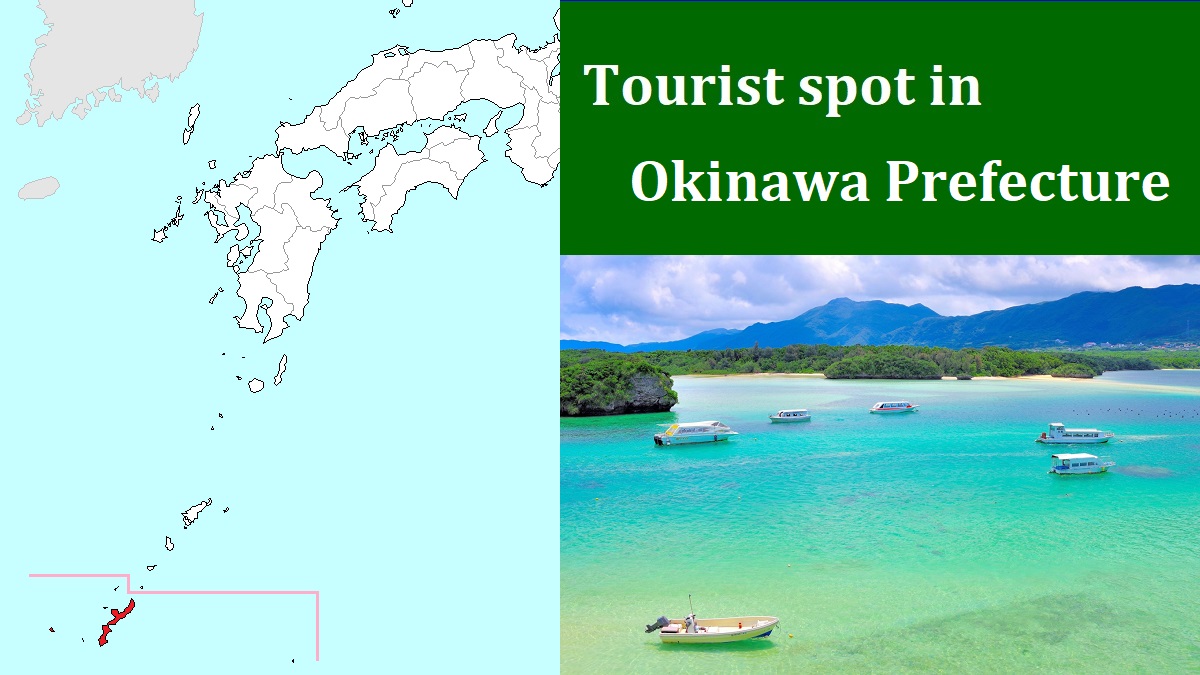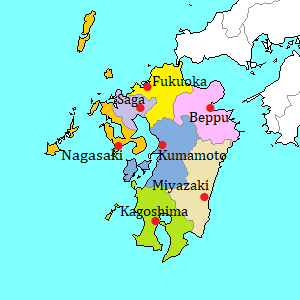Shuri Castle [首里城]
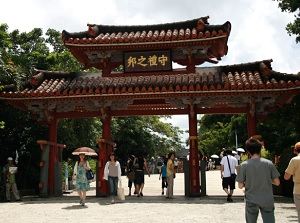
Shureimon of Shuri Castle
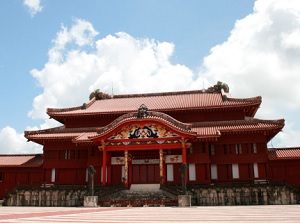
Seiden of Shuri Castle
before the destruction by fire
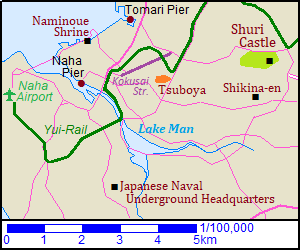
Shuri Castle ("Shurijô" in Japanese) is the castle of former Ryukyu Kingdom.
It is located on a hill about 4 km east of the center of Naha city.
It is the symbol of Okinawa.
It is unknown that this castle was built, but the date of its construction is thought to be around the 14th century.
In 1429, Ryukyu Kingdom was established, and this castle had been the center of the kingdom until 1879.
After Okinawa became a prefecture in Japan, this castle had fallen into ruin.
The castle was repaired to designate as a national treasure in the early 1930s.
But it was destroyed completely in the Battle of Okinawa (the ground battle of World War II) by U.S. army in 1945.
After the war, University of the Ryukyus was built on the site.
But the Okinawa residents had been eager to rebuild Shuri Castle.
In 1958, Shureimon gate was restored first.
It was the main gate of this castle, and has also been the symbol of Okinawa.
After Okinawa was returned to Japan in 1972, Kankaimon gate and the castle walls were restored.
Then, University of the Ryukyus was moved in 1979.
And the main castle and many other buildings were restored from 1989 to 1992.
In 2000, the ruin of Shuri Castle was declared a World Heritage site, as one of Gusuku Sites and Related Properties of the Kingdom of Ryukyu.
(The restored constructions aren't included in the World Heritage site.)
On October 31, 2019, a fire broke out in the main castle.
Main hall and a few buildings in the center of the castle had been completely destroyed by fire.
All Okinawa residents grieved deeply.
It is possible that the fire was caused by a short circuit.
Japanese government announced that they would rebuild the castle by 2026.
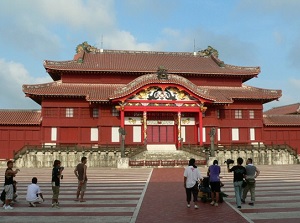
Seiden (before the destruction by fire)
Photo by Railstation.net
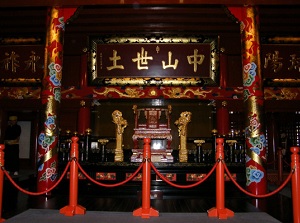
King's seat in Seiden
(before the destruction by fire)
Photo by Railstation.net
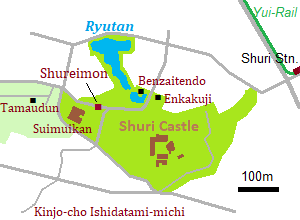
The site is about 400 meters from east to west and about 200 meters from north to south in width.
The constructions of the castle were strongly influenced by Chinese architecture.
The main color of the constructions is red, and the decorations of dragon are used as a symbol of the throne.
The structure of a castle is different from Japanese castle with castle tower, but it is rather similar to Chinese castle with gorgeous palace.
The central part of Shuri Castle has four main palaces surrounding a wide courtyard.
The central palace is Seiden (正殿, Main Hall) on the east side.
And there are Hokuden (北殿, North Hall) on the north side and Nanden (南殿, South Hall) on the south side.
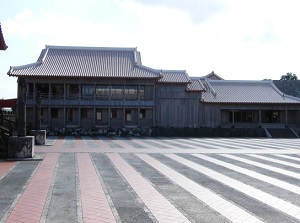
Nanden (before the destruction by fire)
Photo by Railstation.net
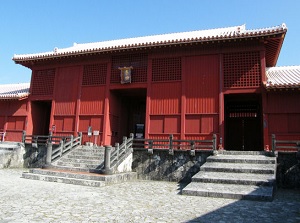
Houshinmon (before the destruction by fire)
Photo by Railstation.net
On the west side, there is Houshinmon (奉神門) and it is the entrance gate to the courtyard.
These buildings had been burnt down in the fire in 2019.
There is an approach about 250 meters long from the western foot of the hill to Houshinmon.
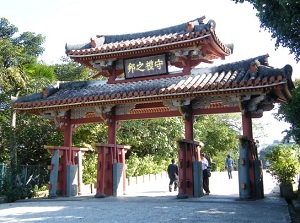
Shureimon
Photo by Railstation.net
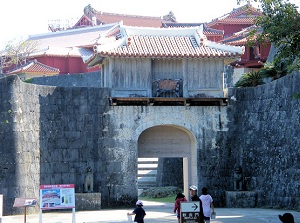
Kankaimon
Photo by Railstation.net
Shureimon (守礼門) is at the entrance of the approach.
The original gate was built in the early 16th century, and the current gate was rebuilt in 1958.
There are more than a dozen gates around the castle and the approach, and each of them has a different style.
On the approach, the visitors can see Kankaimon (歓会門), Zuisenmon (瑞泉門), Roukokumon (漏刻門) and Kôfukumon (広福門).
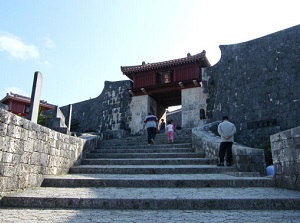
Zuisenmon
Photo by Railstation.net
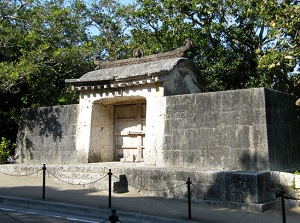
Sonohyan Utaki Ishimon
Photo by Railstation.net
Near Shureimon, there is Sonohyan Utaki (園比屋武御嶽).
"Utaki" is the sacred place where the gods of Ryukyu visit, and Sonohyan Utaki was the sacred forest for the Ryukyu King.
There was the stone gate (Ishimon) for the god in front of the Utaki.
The original gate was built in 1519, and the current gate was restored in 1957.
It is also designated as a World Heritage Site.
By Shureimon, there is Suimuikan (首里杜館) and is the visitor center of Shuri Castle.
Around the castle, there are many ruins and temples associated with Shuri Castle.
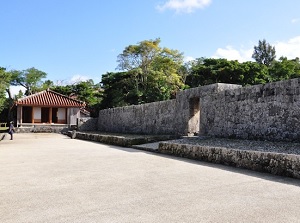
Tamaudun
Photo by Railstation.net
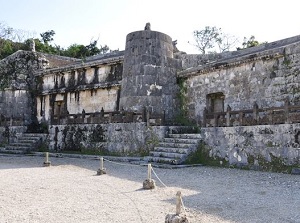
Mausoleum in Tamaudun
Photo by Railstation.net
Tamaudun (玉陵) is the mausoleum of the kings and queens of Ryûkyû Kingdom, and is located about 200 meters west of Shureimon.
The mausoleum was built by Sho Shin (1465-1527, the 3rd king of the the Second Sho Dynasty) for his dead father in 1501.
It has three rooms, and the dead body was put in the central room for a long time.
Then, when it became only its bones, they were washed and enshrined into the other rooms.
The three rooms were made of stone, and they are surrounded by stone fances.
The inner courtyard is filled with pieces of coral.
It is a national treasure and is also designated as a World Heritage Site.
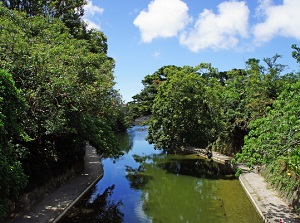
Ryutan
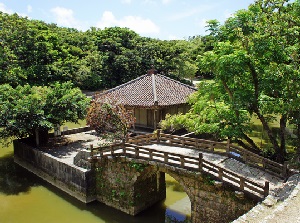
Benzaitendo
On the north side of the castle, there is Ryûtan pond (龍潭).
It was constructed by Sho Hashi (1372-1439, the first king of Ryukyu) as a park for the people in 1427.
And the king treated the envoys from China with the boating party on this pond.
Benzaitendo (弁財天堂) is a small temple by Enkanchi pond (円鑑池) next to Ryûtan.
Enkanchi pond is also an artificial pond constructed in 1502, and the rain water and spring water from Shuri Castle and Enkakuji flow into this pond.
Benzaitendo was built for enshring the god of sea at the same time, but it was destroyed when Satsuma Domain in Kagoshima invaded in 1609.
And the restored temple was destroyed again by the Battle of Okinawa in 1945.
Current temple was restored in 1968.
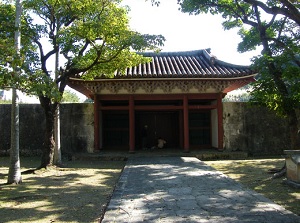
Enkakuji
Photo by Railstation.net
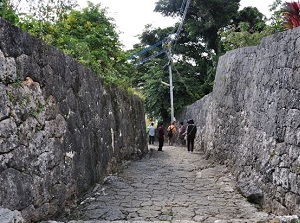
Kinjo-cho Ishidatami-michi
Photo by Railstation.net
There was Enkakuji temple (円覚寺) just east of Benzaitendo.
It was a Buddist temple of Rinzai Zen sect, and was built after the model of Engakuji temple in Kamakura in 1494.
All buildings except Houjou Bridge were destroyed by the Battle of Okinawa.
And only the main gate was restored in 1968.
In the town to the south of Shureimon, Kinjo-cho Stone-paved Street (金城町石畳道) runs. (In Japanese, "Kinjô-chô Ishidatami-michi")
The original road was constructed in the 16th century.
It was the main road from the castle to the southwest.
The total length was about 10 km, but most of the road was destroyed by the Battle of Okinawa and only a part 238 meters long remains.
How to get here
By monorail (Yui-Rail), the nearest stations of the monorail (Yui-Rail) is Shuri.
From the station, about 15 minutes walk (1 km).

